How a recurring dream informed choreographer Jamar Roberts’ new work with L.A. Dance Project
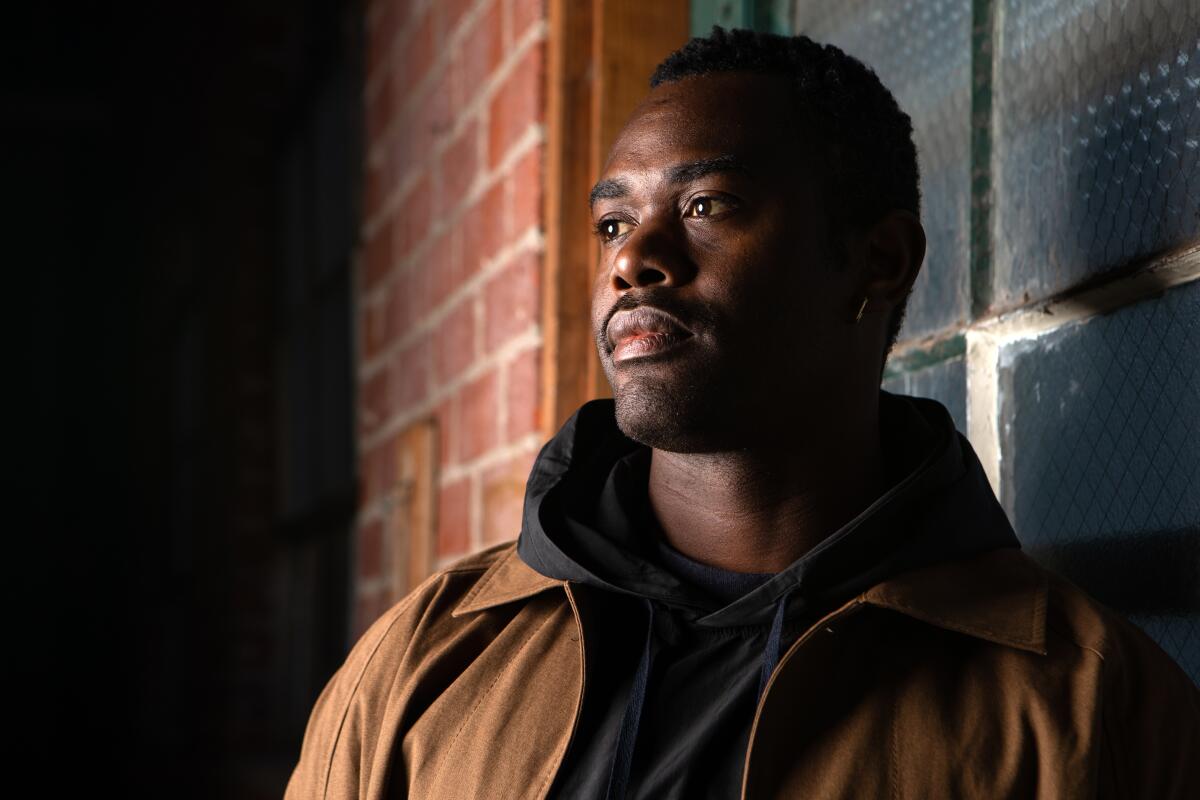
- Share via
It begins with a flutter, a flap, a wave — an angel. At the start of Jamar Roberts’ new work “Lineage,” the L.A. Dance Project company comes together with arms out wide, shaking their hands in unison. The moment soon collapses into chaos. New groups form, one stiff and precise, moving one limb at a time at rapid speed. Meanwhile, the other transitions from one step to the next.
Nayomi Van Brunt breaks through the cacophony of bodies, diving into the hands of two fellow dancers. Her head and body turn to look at the audience while they hold her body back. A moment later, sheis surrounded by fluttering hands that transform the collective into a larger, angelic creature — one you can’t look away from.
Roberts, formerly a dancer and now a choreographer, didn’t know what his new commissioned work with L.A. Dance Project would become when he started rehearsals with the company. Unlike most commissions, which typically kick off with one to two weeks of rehearsal, he was given five weeks in the studio leading up to a weekend of performances. He took that to his advantage.
“Normally I come in prepared and I already know what the piece is about and everything,” Roberts says. “But here I didn’t.” He prefers it this way, he says, because the work then “becomes really tailored to who’s in the room, and not me.”
That resulted in “Lineage,” a work that’s being presented alongside artists in residence Bobbi Jene Smith and Or Schraiber’s “Quartet for Five” at LADP until Saturday — now sold out. Over the several weeks in the studio, Roberts’ world-premiere work became an abstract dive into the psyche, informed by dreams about his grandmother. Through it, he paints a fantastical portrait of relationships with others and the self.
Prior to venturing to the downtown L.A. studio, Roberts was the resident choreographer of Alvin Ailey American Dance Theater from 2019 to 2022 — setting five acclaimed works. He had been with the company since 2002 and retired from dancing in 2021. And in February 2022, he made his choreographic debut at New York City Ballet after a quarantine spent creating work for film. Moments of breakthrough, as well as periods of conflict about what it means to be in the dance world right now, have informed his long journey to becoming a choreographer. His years at Alvin Ailey have helped him communicate his vision while also allowing the dancers to uphold their own style; both are central to LADP’s mission.
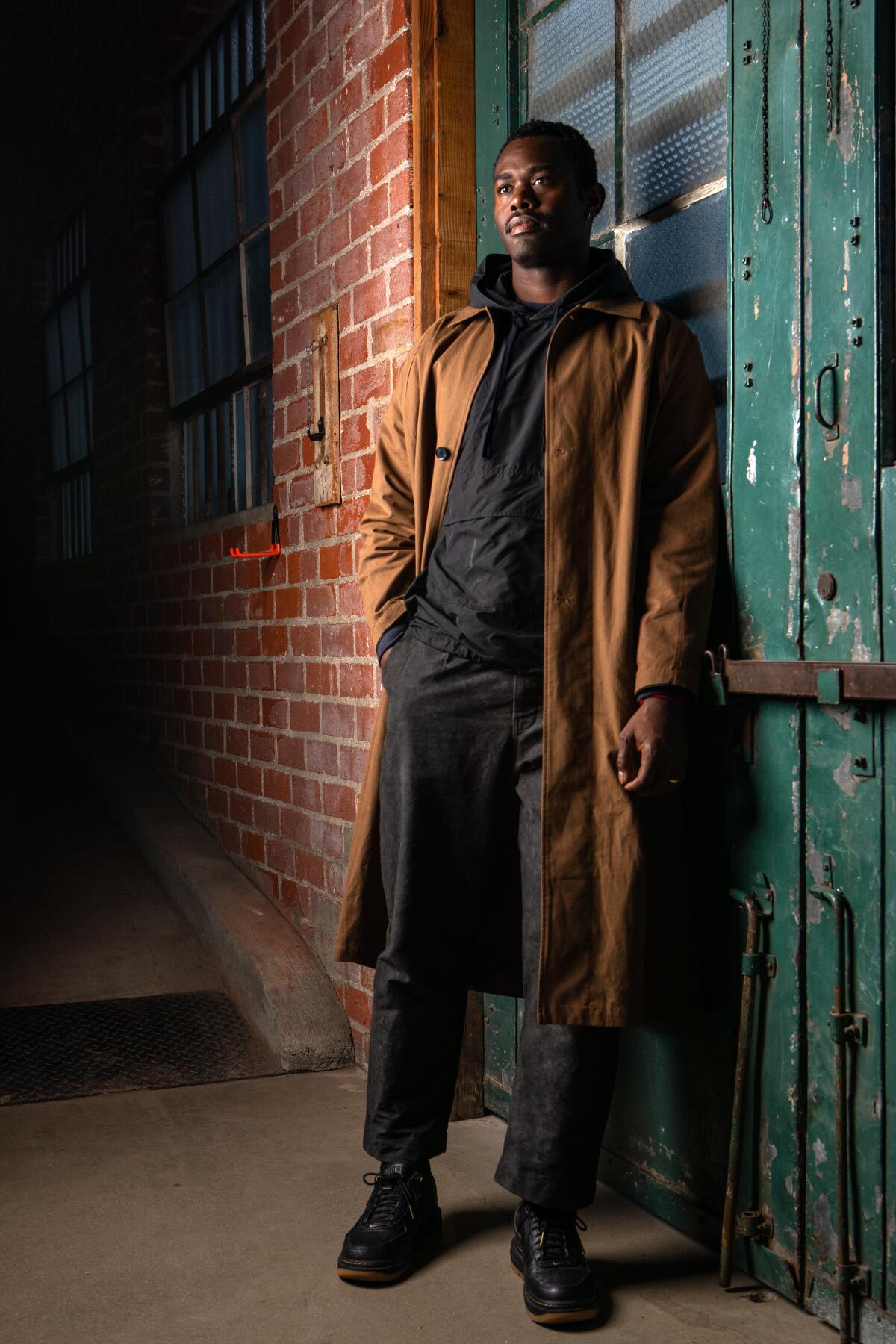
Roberts often takes a more intuitive approach to choreography, looking for what will may help artists interpret the movements. That can involve unusual phrases (like “SpongeBob” and “stop sign”) being used as a way to both lighten the mood and create signifiers for a certain section. “I can’t not be myself in the room,” Roberts says. “I’m very awkward and silly naturally.”
To create “Lineage,” he began by thinking about recurring themes — such as angels — and how that idea would translate into movements.
The work incorporates plenty of movement from the upper body, utilizing the arms and swerving them across the body like rivers, pulling from the elbow. An arm sweeping and swinging then pulls the body forward. In a separate sequence, the arms are widespread on the sides of the body, curving like an umbrella. During an early February rehearsal, Roberts looks at the movement for a second before instructing the company of dancers to shake their forearms, flapping.
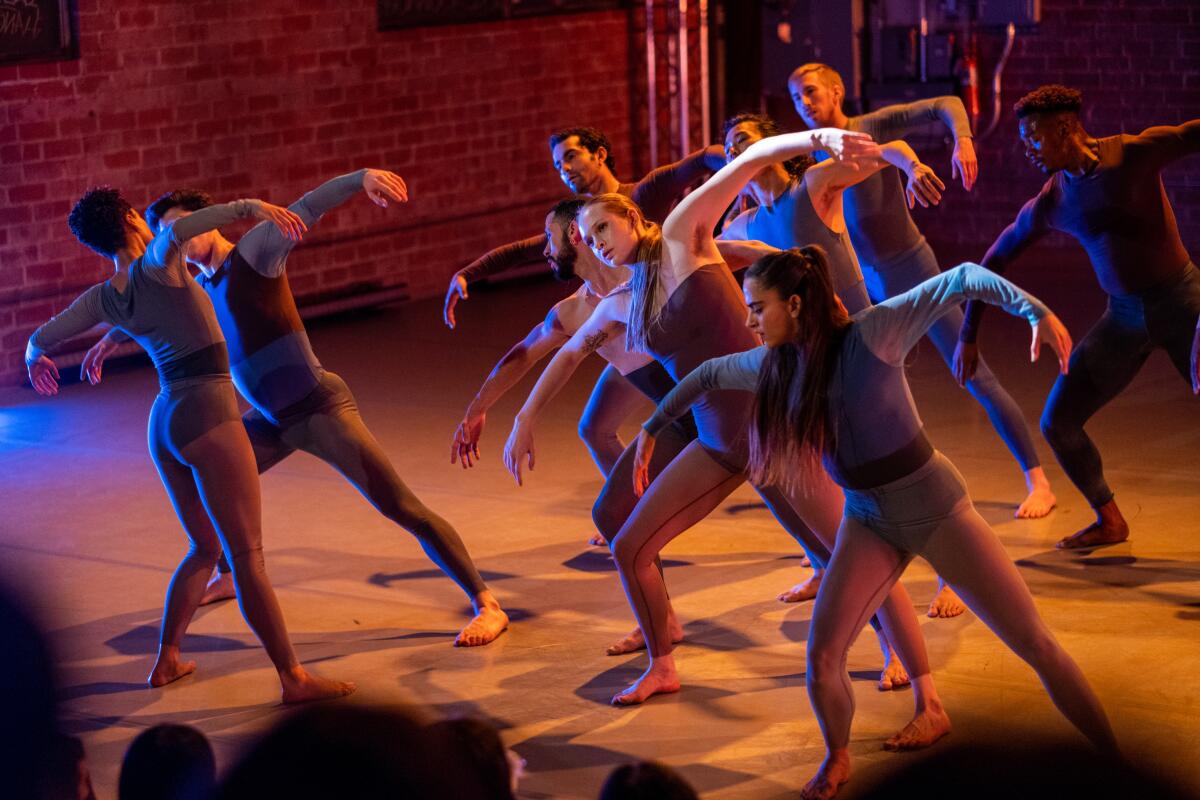
“Sometimes I think of the arms as like wings,” Roberts says. “I was thinking of some type of heavenly being or something, but the way that they would communicate wouldn’t be the way that you and I would communicate.”
The pace of the performance is often quick. He compared it to James Cameron’s “Avatar” : In the same way that the blue characters connect to the trees through their hair, the characters in his choreography are pulled to move by a similar overarching energy, a higher being, that they strive to connect to.
The movement language Roberts developed is unique in that it won’t be revisited. He said that he creates a new vocabulary of movement for each choreographic work. Anything created at L.A. Dance Project will not be recycled.
“These steps here, you may not ever see them in any other piece because they’re very specific to this work and these dancers,” Roberts says.
In the same Feb. 3 rehearsal, dancers go through a sequence heavily incorporating the arms and hands before their bodies flow to the other side of the stage, one by one. They follow one another with the same choreography, over and over. Roberts points to the theme of lineage in these moments, nodding to generational trauma capable of “ripping through time.”
Roberts developed the work after having recurring dreams about his grandmother, who died 12 years ago. “She’s very in the forefront of my mind, memory, life,” he says. He started to explore the “idea that a person can be gone, but still be present in your life in some ways, physically or metaphysically,” he says.
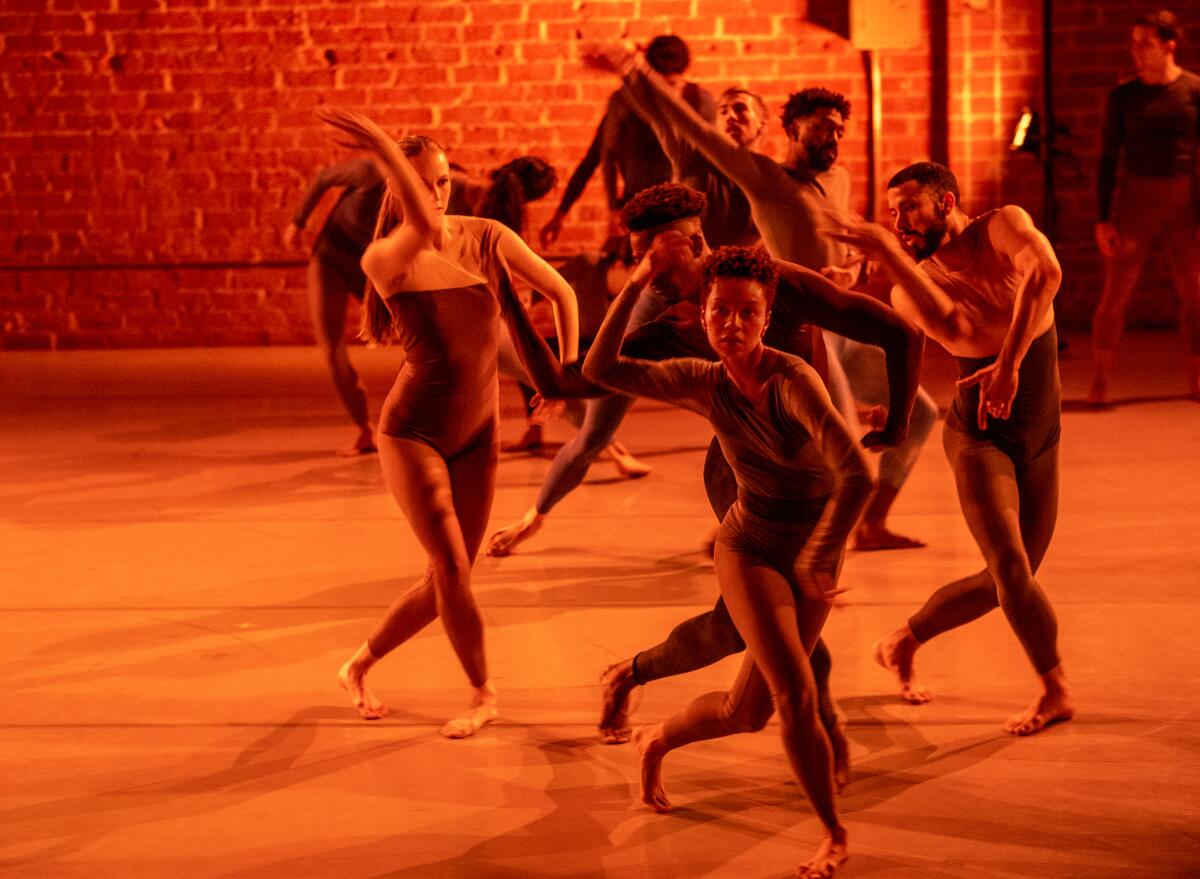
The theme also has a through-line in the avant-garde jazz music it’s set to. “You think of the lineage of in the history of jazz music and how it was created by Black people,” Roberts says. He intentionally sought to not use a musical artist common to dance, like Mozart. “What about Miles Davis?” he asks. “What about John Coltrane? Dance in America feels so white, I feel a certain responsibility within my own self to bring forward the geniuses of Black music.”
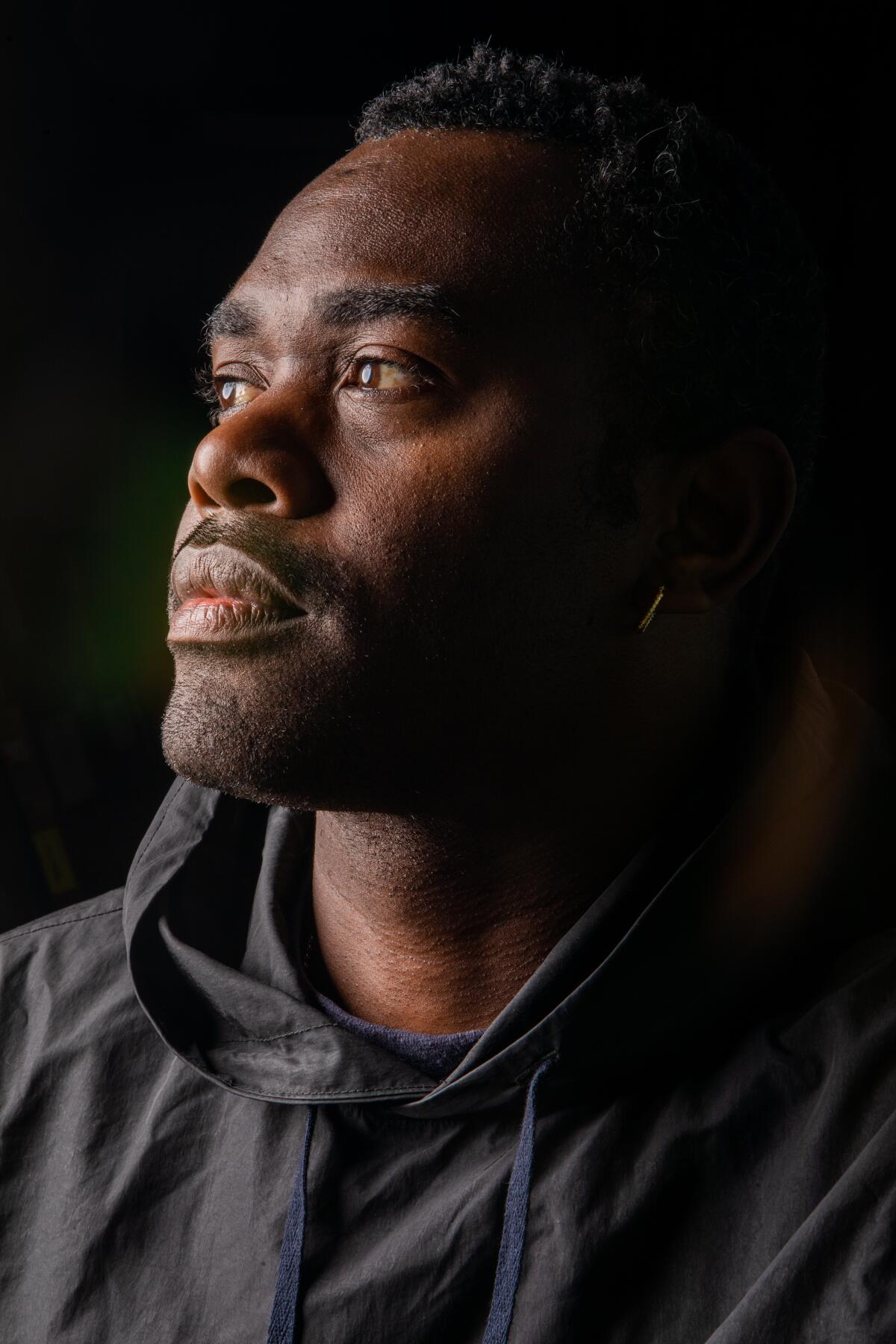
As dancers broke from the line they’ve created up the stage, their movement shifted with the thrum of the music. A trio formed here and a duo glided there. The dreamlike world came to life, as bodies clashed and combined into a fog. When they surfaced once more, they revealed David Freeland stretching out his leg and rolling the energy up the spine, slowly settling his chin toward his chest.
At that moment, Roberts runs from his seat to the marley dance floor. The dancers look over at Roberts as he stands still. He let out a soft chuckle and moved through the next step, before prematurely ending and stepping back.
OK,” he says, before setting the next move.
More to Read
The biggest entertainment stories
Get our big stories about Hollywood, film, television, music, arts, culture and more right in your inbox as soon as they publish.
You may occasionally receive promotional content from the Los Angeles Times.











